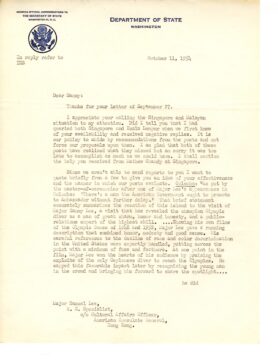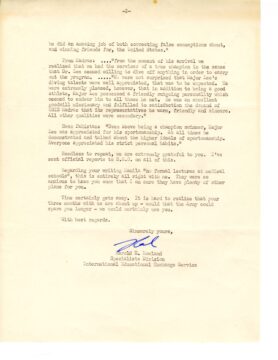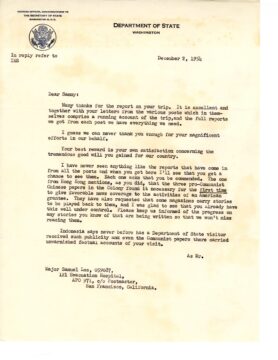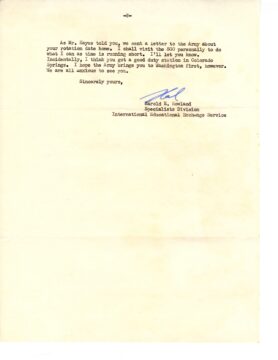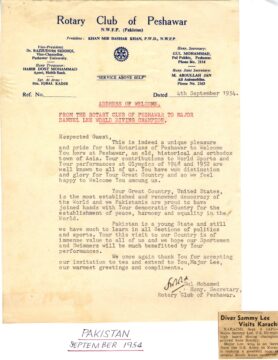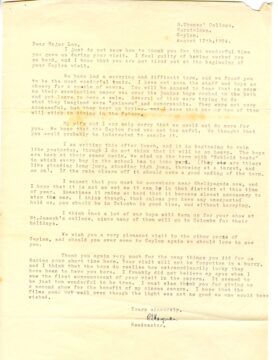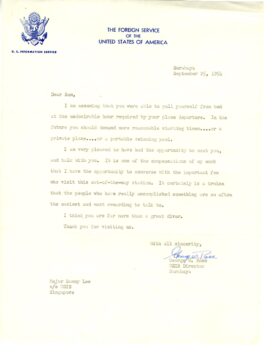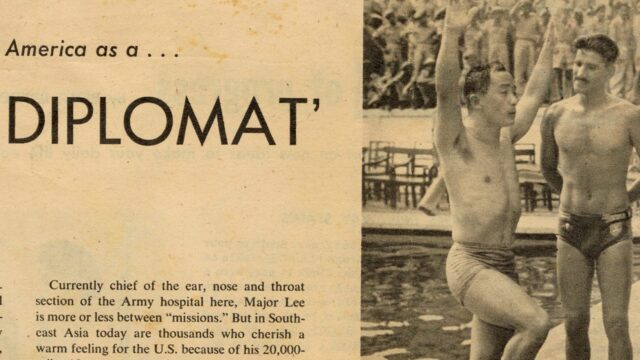
Dr. Sammy Lee: Olympic Champion and Goodwill Ambassador
Born in California in 1920 to Korean immigrant parents, Dr. Sammy Lee represented and served the United States in many ways. By the 1950s, Lee was an Olympic gold medalist, a U.S. Army physician, and a goodwill ambassador for the State Department.
Lee’s worldwide celebrity status and ability to charm fans led the State Department to tap Lee to be a pioneering goodwill ambassador to Asia and Europe. As a goodwill ambassador, he represented the United States as a democratic land of opportunity and equality in countries where communist propaganda was spreading.
Domestically, his high profile as an Olympic champion and cultural ambassador raised awareness of how racism damaged perceptions of the United States overseas.
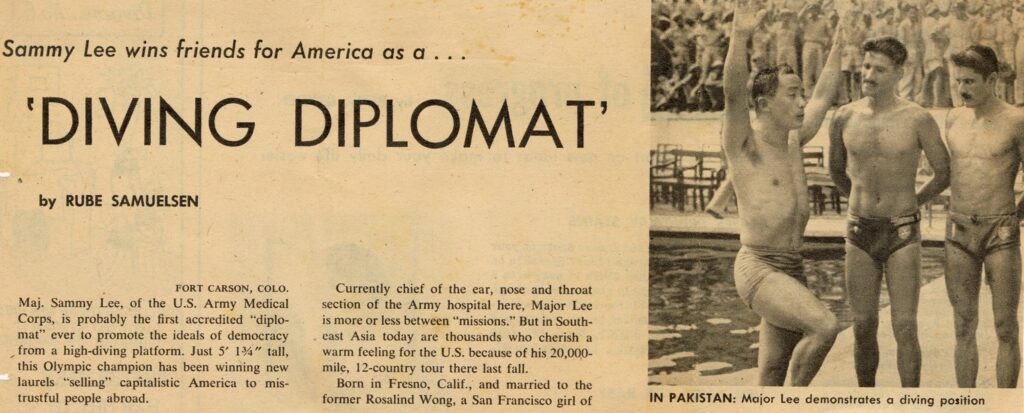
 What is a “Goodwill Ambassador?”
What is a “Goodwill Ambassador?”
Goodwill ambassadors are prominent Americans who represented the United States overseas through State Department programs. Today, these individuals are more commonly referred to as Cultural Ambassadors, Sports Envoys, or Arts Envoys. Through these State Department Exchange Programs, Americans can create long-lasting ties between the United States and other countries. Through demonstrations, clinics, and casual interaction, they forge people-to-people ties to build mutual understanding of ideals and culture.
Becoming an Olympic Diver in the Face of Discrimination
Having watched the 1932 Los Angeles Olympics as a boy, Sammy Lee dreamed of becoming an Olympic diver.
However, his local public pool only allowed racial minorities on Wednesdays, which were called “international days.” These restrictions severely limited Lee’s ability to train.
A sympathetic local coach, Jim Ryan, took on Lee as a student. He taught Lee to dive in a sandpit, which Lee later credited with strengthening his legs.
While attending Occidental College as a student-athlete, Lee entered into an Army Student Training Program in 1942. Through the program, he secured tuition payment for his medical education. Lee would study at the University of Southern California School of Medicine while serving in the U.S. Army Reserves.

He continued to train throughout his education and military service and won several national titles, ultimately making it onto the U.S. Olympic Diving team.
In the 1948 London Olympics, Lee won the gold medal in platform diving. During the 1952 Helsinki Olympics, he was serving as a physician in the Korean War, but the Army granted him one month’s leave to train and represent the United States. Lee was the first diver to repeat as a gold medal winner in the same event.
In 1953, Lee became the first person of color to win the James E. Sullivan Award, the Amateur Athletic Union’s award for the nation’s best amateur athlete.
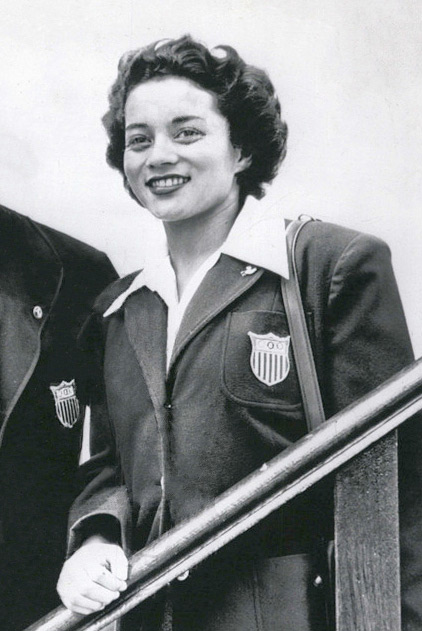
“Sammy Lee of Los Angeles, Occidental College, and the U.S. Army Medical Corps… He is a living testament before the peoples of the world to equality of opportunity in America.”
– Narration from 1952 Olympics Newsreel
Sammy Lee: The Diving Diplomat
In 1954, while on leave from the U.S. Army Medical Corps in Korea, Lee represented the United States as a U.S. Department of State goodwill ambassador. Through the State Department, Lee traveled to Japan, India, Sri Lanka (at the time known as Ceylon), Pakistan, Turkey, Singapore, Vietnam, Burma, Hong Kong, and the Philippines.
Lee had the Army Medical Corps’ full support to represent the United States as a cultural diplomat. As Major General Leonard D. Heaton of Walter Reed Army Medical Center said in approving Sammy’s leave from the Army:
“I am sure that your presence will mean more than many bullets, tanks, and so forth.”
– Major General Leonard D. Heaton, in approving Sammy Lee’s leave for the Army
Sammy Lee was one of the first Asian American goodwill ambassadors to counter Soviet and Chinese Cold War propaganda about the United States. While Lee spoke about his achievements, he also addressed how the United States people and their government were acknowledging discrimination and working to address racism.

As a Department of State goodwill ambassador, Lee gave diving exhibitions for fans and aficionados and classes for local divers. As a physician, he also visited hospitals and medical schools.
U.S. embassies often had to improvise to find appropriate venues for exhibitions. In one case, Sammy dove off of a platform specially constructed by the Pakistani Army. In another case, he dove off a table.

Lee excelled in creating people-to-people ties, with divers in each country asking him to return for further coaching. His ability to engage in tough conversations on race in America and the value of democratic principles with composure and humor gained him respect from host countries. People identified with Lee. They saw him as a representative of America who truly saw them as equals. As Dr. Sammy Lee said himself:
“… it did give me great pleasure to dive for them and to show them that despite minor shortcomings in my country here and there, we are able to guide our destiny and become what we want to become.”
– Sammy Lee
U.S. diplomats praised his communication skills and sense of humor. One embassy official noted, “Dr. Lee seemed willing to dive off anything to carry out the program.” Several embassy officials reported back to Washington D.C. that he was the first U.S. goodwill ambassador to receive positive and unbiased coverage from local pro-Communist newspapers.
Correspondence Regarding Sammy Lee’s Sports Diplomacy
Lee’s primary contact with the State Department for his tour was Harold “Hal” Howland, for the International Education Exchange Service. Howland advocated strongly for the tour within the Department and frequently corresponded with Lee throughout the tour. In his letters, he writes about Lee’s glowing reports from abroad to Washington D.C.
Foreign Service Officers posted in the various countries Lee visited were responsible for organizing his trip itineraries and providing Lee briefing materials. They often wrote Lee once he departed to his next tour stop with follow-up reports and kind thank-you letters to Lee. Organizations that Lee met with also wrote to Lee before and after his visits.
Sammy Lee Returns to California
After traveling throughout Asia to advocate for the United States as a country of equal opportunity, Lee returned to California to find that he still had a role to play in the struggle to end discrimination at home.
Lee married his wife Rosalind in 1950 and they welcomed their first child in 1955. As he established his private medical practice, local realtors prevented Lee and his family from buying a home in a segregated Orange County, California neighborhood called Garden Grove.
Due to his high profile from his Olympic medals and State Department tour, Lee’s situation attracted widespread political attention and public outcry, including supportive comments from Vice President Nixon, who had grown up nearby.
In response, neighboring communities offered to welcome the Lees. They bought a house for their growing family in Anaheim, California.
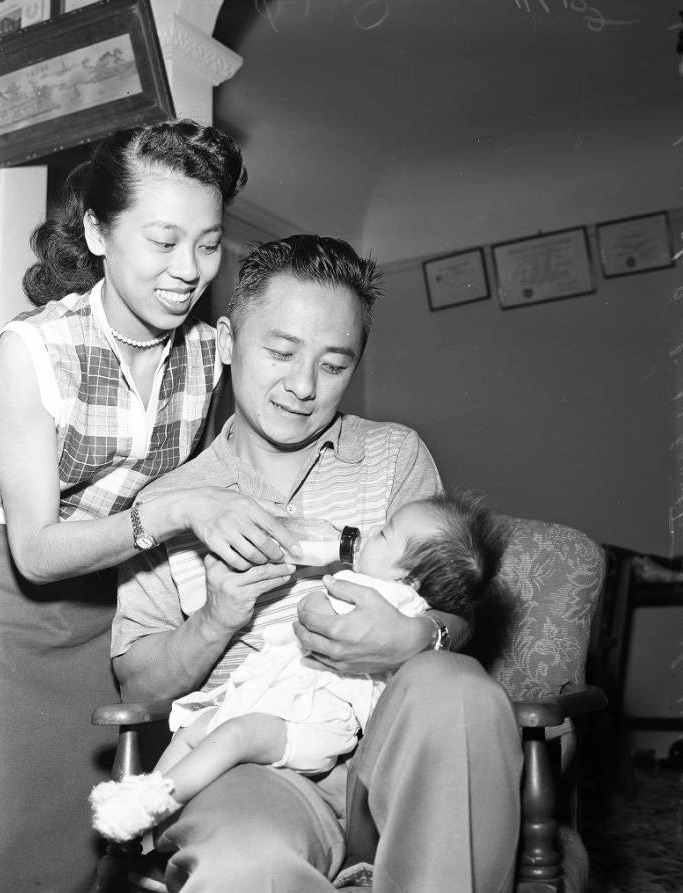
By highlighting how racist housing restrictions could be used in anti-U.S. Cold War propaganda, Lee’s case contributed to the decline of the discriminatory practice. The event helped force the nation to come to terms with how America could not defend its ideals abroad if it did not practice what it preached at home. As the San Francisco Chronicle commented in 1955:
“Here was an American of Oriental descent, demonstrating to Asians that despite Communist propaganda the United States is a land of tolerance and opportunity. The story of Major Lee’s reception in Garden Grove [California] will embarrass our country in the eyes of the world.”
– San Francisco Chronicle, 1955
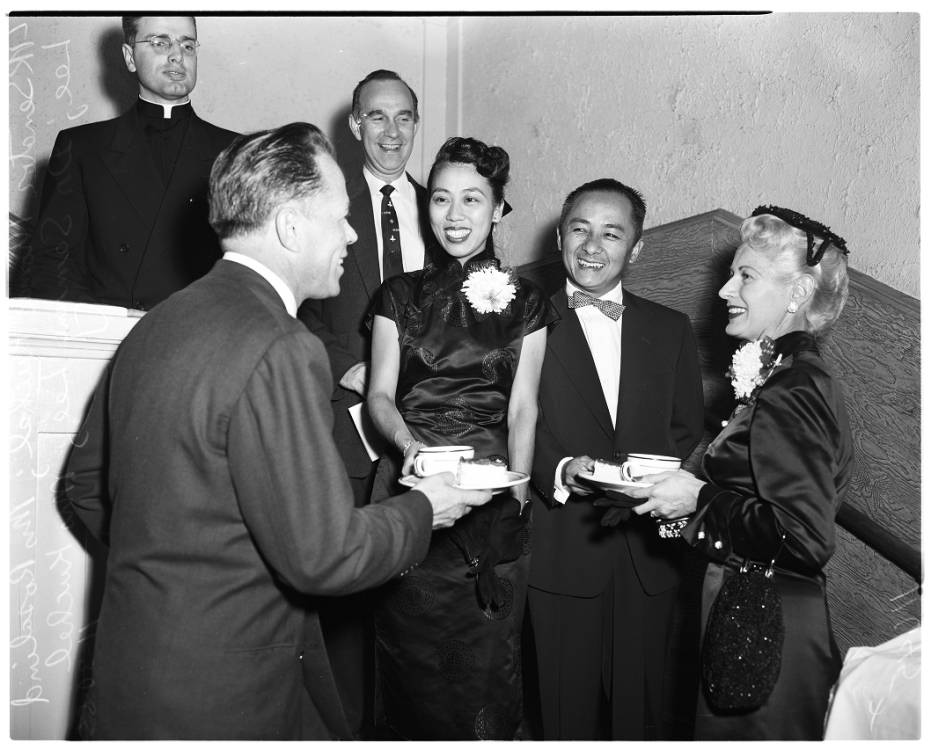
The Legacy of Sammy Lee
The year after his service as a goodwill ambassador, Lee retired from the Army and began an ear, nose, and throat practice in California. He also operated a diving and swimming school and served as a diving coach for the national teams of South Korea and Japan and individual U.S. Olympic medalists.
In 1986, when the University of Southern California established its Korean Heritage Library, Lee and other members of the Korean American community aided in fundraising efforts. The resulting endowment has allowed the Korean Heritage Library to document the contributions of Korean Americans to California and U.S. history while highlighting the community’s commitment to an independent Korea. Dr. Sammy Lee passed away in 2016 at the age of 96.
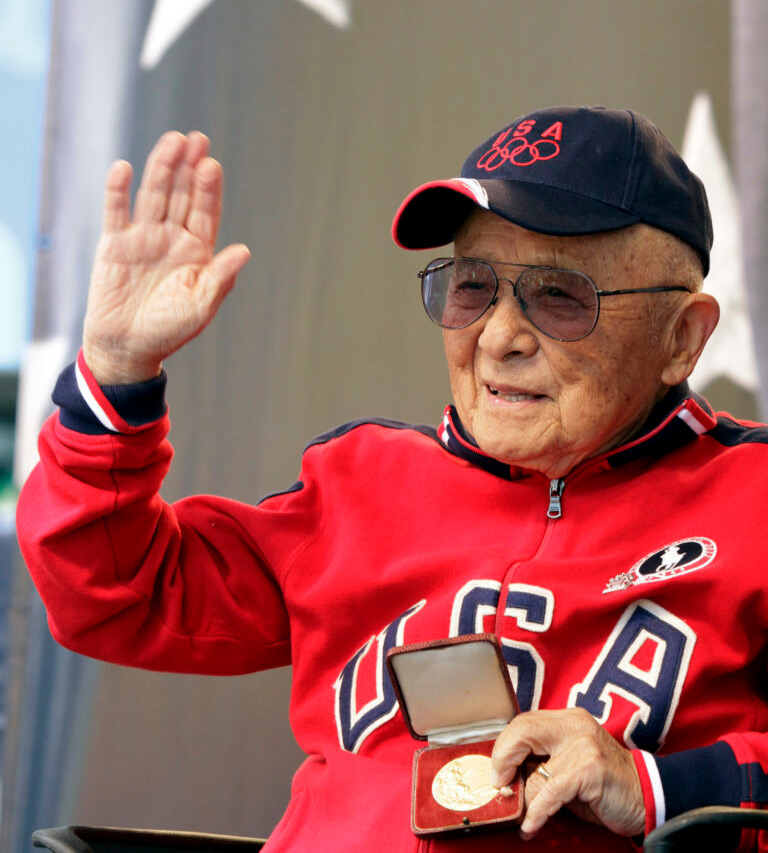
Sammy Lee showed the world what it means to be an American. His legacy is one of service, social justice, and dedication. To this day, Sammy Lee inspires diplomats, whether citizens or government officials. His story is a testament to the power of cultural diplomacy and the importance of showcasing diverse figures abroad.
“I give diving exhibitions and then I’d have a little session to talk about American-ism, prejudice, bigotry, and I always, in order to top them, say that the majority of the American people didn’t practice what they preach. I could not be here as a two-time Olympian, doctor of medicine, major in the U.S. Army and winner of the James E. Sullivan Award otherwise. That was my punchline. Nobody could top that.”
– Dr. Sammy Lee
Sources
Sammy Lee: A Life That Shaped the Currents of California and U.S. History (KCET-PBS)
The golden friendship between the two first Asian American Olympic champions (NBC)
Sammy Lee Climbed Above Racism, Dove Into Olympic History (PBS)
Diver’s Ambassador Life Showed Bigotry Is Never Far From The Surface (WBUR – NPR)
An Olympian’s oral history: Sammy Lee, 1948 and 1952 Olympic Games, diving (LA84 Foundation)
You Bet Your Life #55-30 Sammy Lee, Olympic diving champion (‘Hand’, Apr 19, 1956)
Acknowledgments
NMAD wishes to thank Mrs. Rosalind Lee and Bill Brown for their support on this project.
